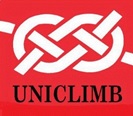Preventive Controls
-Preventing an incident by reducing the likelihood that an incident will occur
-When we identify hazards, we implement preventive controls – controls that will prevent the hazard from becoming a dropped object.
-Some preventive controls include:
- Effective Planning (TRA)
- Primary Fixings / Secondary Retention
- Maintenance, Surveys, Inspections
- Tools and Equipment Aloft Registers and Log Books
- Collision Checklist
- Management of Distractions
- Observation (STOP), Individual Awareness and Vigilance
- DROPS Training, TOFS
What can YOU do to prevent dropped object incidents?
- Individual awareness of the task and surroundings
- Follow the TRA process, always use the Risk Assessment Prompt Card to help identify and address all hazards – whether you are working individually or as a team
- Effective and regular application of STOP / HAZARD OBSERVATION process
- Call Time Out For Safety on longer tasks, or after breaks when it is time to refresh everyone’s minds on the hazards, risks and controls in place
- Use and check derrick log books and registers – be aware of items taken aloft and ensure they are recorded properly
- Follow procedures and never deviate from the plan without stopping the task, reassessing it and applying the Management of Change process
- Ensure third party and temporary equipment is included in the inspection program
Preventive Controls – Observation 1

Preventive control in this scenario are the ties holding the cables to the brackets. What would you check here?
- Visually check the ties are in place and not broken
- Check mountings for signs of damage or corrosion
- Check surroundings for other potential dropped objects or collisions
- Check that no loose items have been left in the cables, e.g. welding rods, tools etc.
Preventive Controls – Observation 2

You are passing by and you witness this situation. The unit is not in the process of being lifted today, but at some point it will be. What would you do here?
- You see the problem, you own it. Use STOP / HAZARD OBSERVATION card if applicable.
- Remove unnecessary shackle – check color code and if out of date, quarantine it
- Check four part shackles are correct and complete
- Check certification on all lifting equipment and last service date of CCU
- Check hatch is secure, all handles and lugs are secure
- Check for other loose items, clear forklift pockets
- Report all non-conformance and conditions using STOP / HAZARD OBSERVATION, but endeavor to discuss these issues first with those responsible for deck materials
